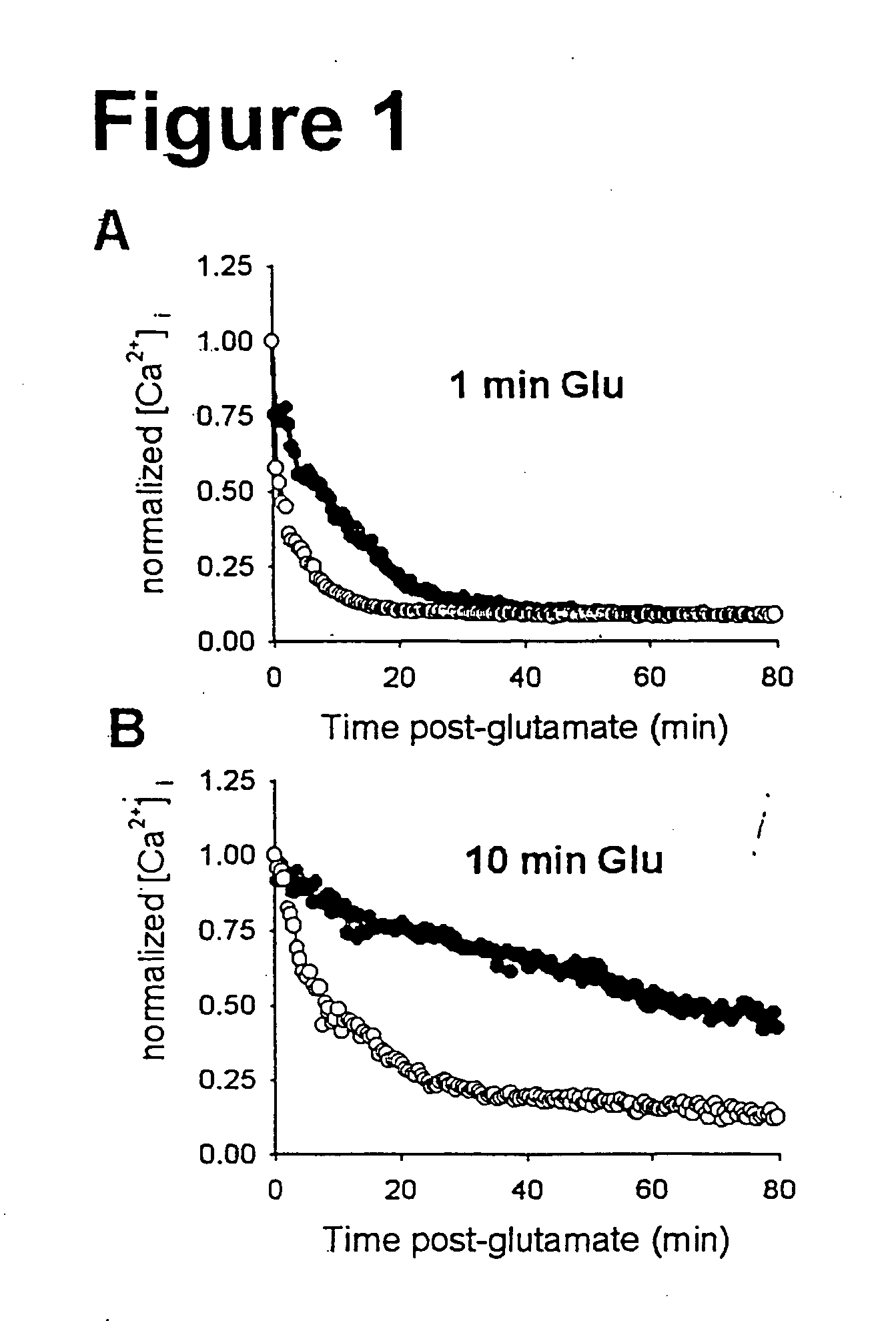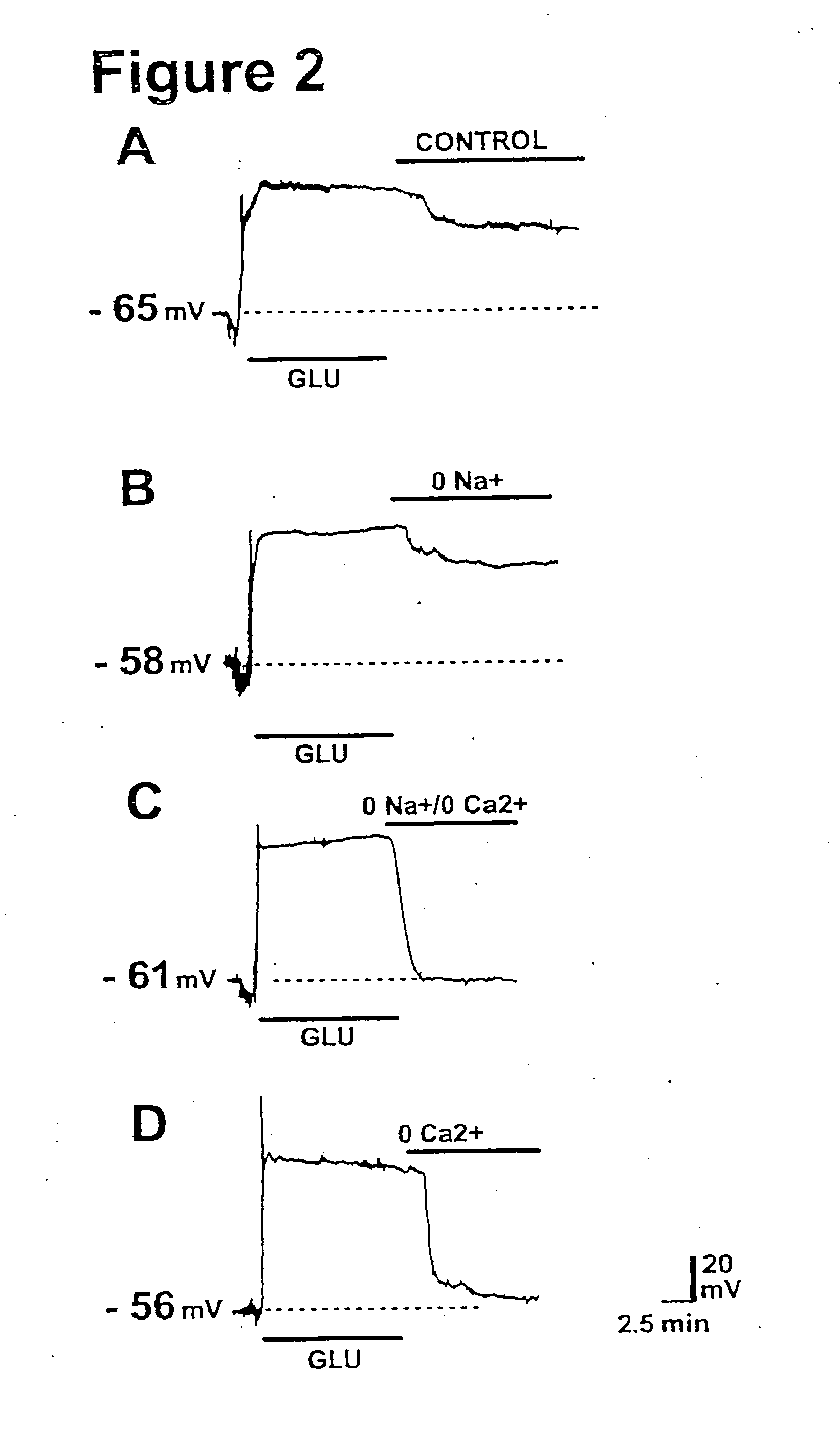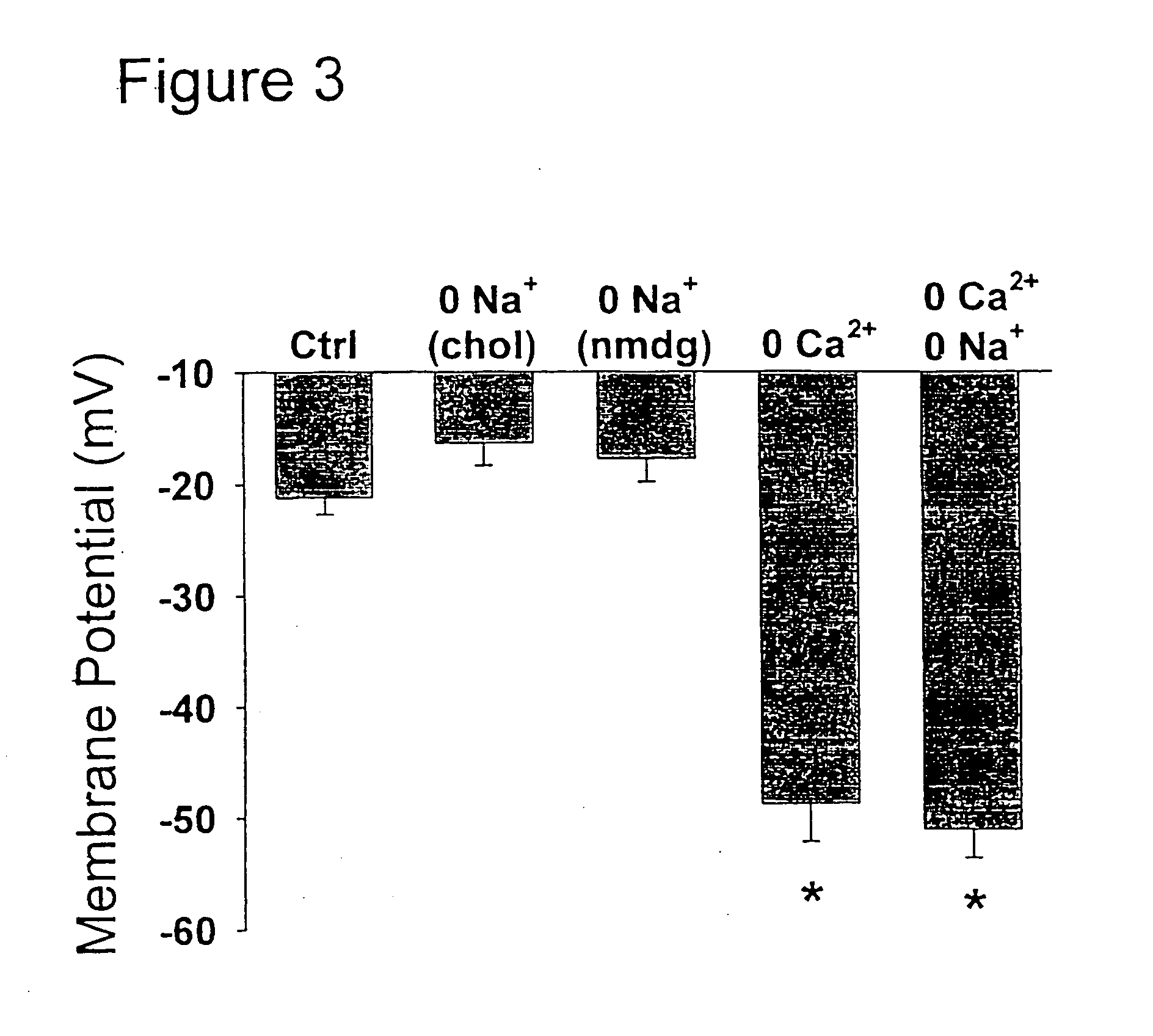Inhibition of a novel calcium injury current that forms in nuerons during injury prevents neuronal cell death
a calcium injury current and nucleus technology, applied in the field of inhibition of a novel calcium injury current, can solve the problems of decreased blood or oxygen supply, nervous system is especially vulnerable to chronic injuries and aging, and conventional calcium channel blocking agents have been shown to be effective, so as to and reduce the risk of aging.
- Summary
- Abstract
- Description
- Claims
- Application Information
AI Technical Summary
Problems solved by technology
Method used
Image
Examples
example 1
Method of Preparing Hippocampal Neurons in Culture
[0118] Primary hippocampal cultures were prepared by a modification of the method of Banker and Conan, as described by DeLorenzo et al. (incorporated herein in their entirety by reference). Banker, G. A. and W. M. Conan, Brain Res. 126:397-42, 1977; DeLorenzo, R. J., S. Pal, and S. Sombati, Proc. Natl. Acad. Sci. U.S.A. 95:14482-14487, 1998. Hippocampal neurons and other cells were dissected from 2-day postnatal Sprague-Dailey rats (Harlan, Frederick, Md.) and plated at a density of 2×105 cells / chamber onto #1 cover glass chamber slides (Nunc, Naperville, Ill.) previously coated with 2 μl Matrigel Matrix (Becton Dickinson Labware, Bedford, Mass.). Cultures were maintained at 37° C. in a 5% CO2 / 95% air atmosphere and fed three times weekly with neuronal feed containing MEM, 2 mM L-glutamine, 10 mM glucose, 5 μM / ml insulin, 100 μM / ml transferrin, 100 μM putrescine, 30 nM sodium selenite, 20 nM progesterone (ICN, Costa Mesa, Calif.), 1...
example 2
Intracellular Calcium Measurements
[0119] Cell loading with indo-1 or Fura-FF:
[0120] To load hippocampal neurons with indo-1 or Fura FF, neuronal feed was removed and replaced with Recording Solution (145 mM NaCl, 2.5 mM KCl, 10 mM HEPES, 10 mM glucose, 2 mM CaCl2, 1 mM MgCl2, pH 7.3, osmolarity adjusted to 325 with sucrose) containing 1 μM indo-1 AM or 1 μM Fura-FF AM. Pal, S., Limbrick, D. D., and R. J. DeLorenzo. Cell Calcium 28: 181-193, 2000. Loading of cells was performed at 37° C. for 1 hour. Cells were then be washed three times and incubated for an additional 15 min to allow for cleavage of the indo-1 AM or Fura-FF to the free acids form by cellular esterases.
[0121] Microfluorometry:
[0122] [Ca2+]i was measured using the ratio program (Ca2+ imaging mode) of a confocal ACAS Ultima Interactive Laser Cytometer (Meridian Instruments, Okemos, Mich.) as described previously. Limbrick, D. D. J., S. B. Churn, S. Sombati, and R. J. DeLorenzo, Brain Res. 690:145-156, 1995; Wade, M....
example 3
Electrophysiology Experiments
[0126] Before each patch-clamp experiment, culture medium was replaced with recording solution (described above). Cultures were then transferred to the stage of an Olympus IX-70 inverted microscope equipped with phase-contrast optics (Lake Success, N.Y.). Experiments were performed on medium-to-large phase-bright hippocampal pyramidal neurons grown 13 to 17 days in vitro. Throughout each experiment, cultures were perfused continuously at 1 ml / min and maintained at 30 degrees C. using a heating stage. Patch electrodes (2-7 M ohms in resistance) were generated from borosilicate glass capillaries (WPI, Sarasota, Fla.) using a Brown-Flaming PC-80 puller (Sutter Instruments, Novato, Calif.). Electrophysiological recordings were conducted in the whole-cell patch-clamp configuration as described. Coulter, D. A., S. Sombati, and R. J. DeLorenzo, J. Neurophysiol. 68:362-373, 1992; Sombati, S., D. A. Coulter, and R. J. DeLorenzo, Brain Res. 566:316-319, 1991. Cur...
PUM
| Property | Measurement | Unit |
|---|---|---|
| current/voltage relationships | aaaaa | aaaaa |
| resting membrane potential | aaaaa | aaaaa |
| current voltage relationships | aaaaa | aaaaa |
Abstract
Description
Claims
Application Information
 Login to View More
Login to View More - R&D
- Intellectual Property
- Life Sciences
- Materials
- Tech Scout
- Unparalleled Data Quality
- Higher Quality Content
- 60% Fewer Hallucinations
Browse by: Latest US Patents, China's latest patents, Technical Efficacy Thesaurus, Application Domain, Technology Topic, Popular Technical Reports.
© 2025 PatSnap. All rights reserved.Legal|Privacy policy|Modern Slavery Act Transparency Statement|Sitemap|About US| Contact US: help@patsnap.com



